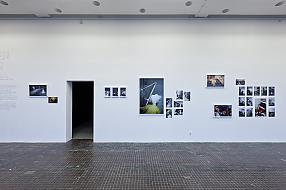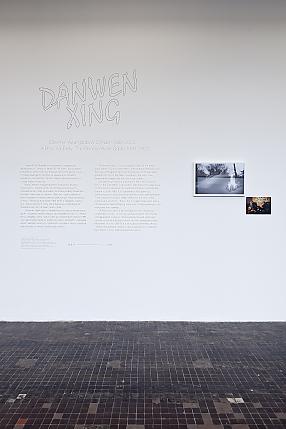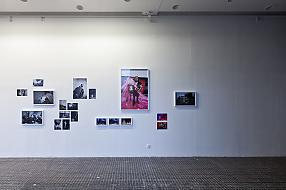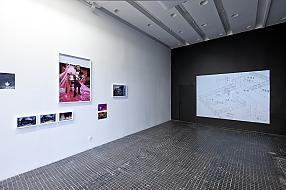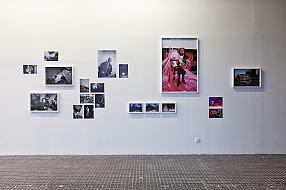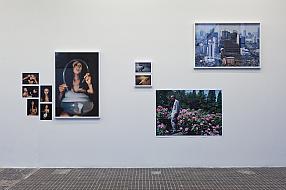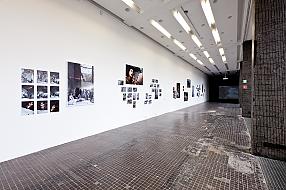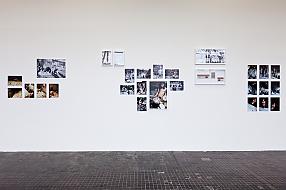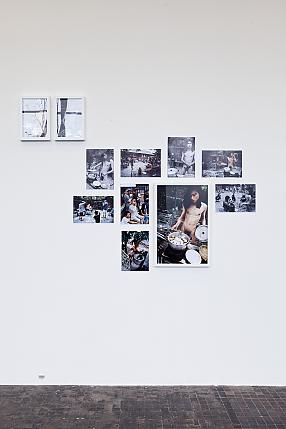Danwen Xing
A Personal Diary: The Chinese Avant-Garde 1993–2003
“A Personal Diary” is a photographic story of the artistic avant-garde in China in the 1990s. The exhibition features more than 140 photographs documenting the life of Chinese avant-gardists not only in the field of visual arts, but also in film, experimental theater and the new music scene.
Danwen Xing’s work is a portrait of the milieu of artists born in the mid-1960s, a generation defined by the experience of the bloody crackdown on student protesters in Tiananmen Square in June 1989. It is a generation that grew up witnessing the country’s political and economic transformation – born during the Cultural Revolution (1966–1976), the artists began their studies at the time of the political and economic “thaw”, the so-called open-door policy introduced by Deng Xiaoping and China’s opening to the world and free markets.
As opposed to other artistic collectives active in Beijing at the time (for example, Yuanmingyuan, which mainly gathered Cynical Realism painters), the East Village attracted performance artists. The most famous of them – Ma Liuming and Zhang Huan – created the majority of their most important works in the East Village. Danwen Xing did not live in the village (though she rented a studio there), and formed part of the community as a friend of its inhabitants and a person who documented the events that they organized. Other artists gathered around the commune included Cang Xin, Yingmei Duan, Gao Yang, Li Guomin, Rong Rong, Wang Shihua, Xu Shan, Zhang Binbin, Zhu Ming and Zuoxiao Zuzhou. The East Village ceased to exist after a police intervention in June 1994, when after a series of performances (Zhan Huan’s 65 Kilograms and Ma Liuming’s Fen-Ma Liuming’s Lunch II), Ma Liuming and Zhu Ming were arrested, other artists were ordered to leave the village, and the local population was banned from renting living spaces to artists.
Along with performance artists, Danwen also captured key figures in underground film and theatre, such as filmmakers of the so-called Fifth and Sixth Generation including Zhang Yuan, Wu Wenguang, Cheng Kaige, Zhang Yimou, Jia Zhangke, Yang Chao and Mou Sen, the theater director active also as a documentary filmmaker. A separate chapter in “A Personal Diary” is devoted to new music, mainly Chinese rock and its main representatives, such as Cui Jian, He Yong and Cobra, the first Chinese all-female band. Cui Jian’s “Nothing to My Name” became one of the protests songs sung in Tiananmen Square.
The final section of the exhibition is devoted to little-known artistic events from Guangzhou, and portrays the activity of artists gathered around the Big Tail Elephant Group (Lin Yilin, Liang Juhui, Zheng Guogui and Xu Tan). The Big Tail Elephant Group was founded in Guangzhou in the 1990s and concentrated primarily on the effects of the city’s rapid industrialization. Immensely varied in terms of style, their works drew attention to the extraordinary pace of the city’s development and social consequences that entailed – exponential population growth, environmental pollution, increased road traffic, development of areas that had undergone little urbanization, and corruption.
Portrayed in Danwen’s work, the 1990s are particularly significant for the development of contemporary art in China. It was a time that – following an extremely lively opening to modernity in the 1980s – might be characterized as a moment of freeze. The political situation rendered any activities in public space impossible for several years, which resulted in the withdrawal of such artistic activities into underground circulation. On the other hand, it was the last moment before the advent of the free market and the utter commercialization of the art world in China – a time when the preservation of utopian approaches still seemed possible.
As the experimental documentary filmmaker Wu Wenguang showed in his film Bumming in Beijing: The Last Dreamers – shot shortly before and after the Tiananmen Square massacre, and leaving an immense impact on the generation of artists active in the 1990s – the end of the 20th century in China was the last moment for dreams in art. The eponymous “last dreamers” are representatives of the 1960s generation: young artists (a writer, a photographer, two painters and an avant-garde theater director) who choose to oppose the system, deciding to live at the margins of society, outside the official system, thus carving out a niche of creative freedom that would have been impossible to achieve either under the Communist regime or its capitalist counterpart. “A Personal Diary” depicts that very moment in Chinese art: extremely unstable and sensitive, it was a moment of great risk and ephemeral freedom, which can open up the space for pursuing one’s dreams.
